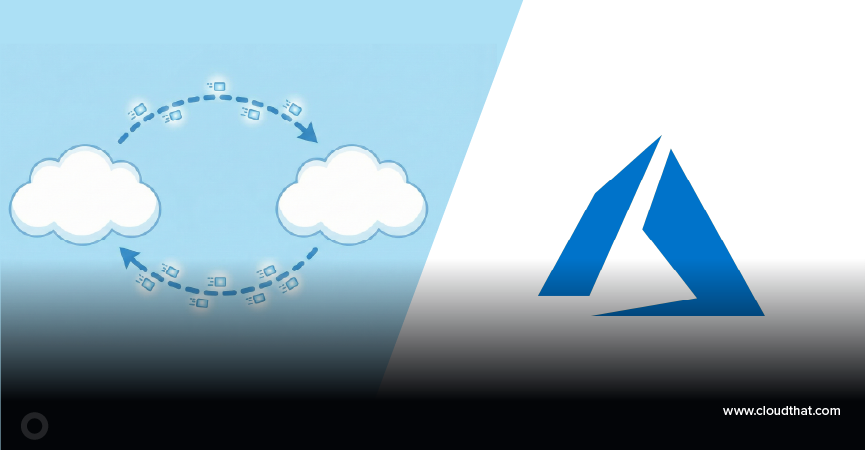|
Voiced by Amazon Polly |
Overview
As businesses demand faster search experiences and smarter data retrieval, Amazon Aurora PostgreSQL continues to evolve to meet these needs. Recent improvements focus on two critical areas: advanced indexing techniques and native support for vector data. In this blog, we’ll explore features by developers to build highly efficient, AI-ready applications on Aurora PostgreSQL. We’ll also walk through a step-by-step guide to configure Aurora PostgreSQL as your knowledge base, ready for search and retrieval.
Pioneers in Cloud Consulting & Migration Services
- Reduced infrastructural costs
- Accelerated application deployment
Introduction
Amazon Aurora PostgreSQL now integrates enhanced indexing and native vector search to provide faster, smarter data access. With the support of GIN, GiST, BRIN, Hash indexes, and pgvector with HNSW indexing, organizations can combine traditional queries and AI-driven search on a single, fully managed platform. Using Amazon Aurora’s SQL-like interface and managed services, developers can create scalable, AI-enabled applications such as recommendation engines, semantic search, and RAG pipelines.
Contemporary Indexing Approaches for Improved Query Performance
Indexes are core to database performance, facilitating accelerated data retrieval. Aurora PostgreSQL and Amazon RDS for PostgreSQL now support a range of index types, each of which is tailored to different use cases:
- GIN (Generalized Inverted Index):
Best suited for complicated data types such as arrays, JSONB, and full-text search. GIN indexes speed up queries that must search across multiple values contained within a single field. - GiST (Generalized Search Tree):
A general-purpose index type that accommodates a broad variety of queries, such as geometric data, range queries, and full-text search. It’s usually the basis for bespoke indexing requirements. - Hash Indexes:
Designed for equality comparisons (WHERE column = value). Although they provide efficient lookups, they are restricted compared to other index types since they’re ineffective with range queries. - BRIN (Block Range Index):
Compact and space-saving, BRIN indexes are most effective with extremely large tables where data has a natural sort order, such as time-series data sets.
Every index type is purpose-built. Picking the correct one can greatly improve performance based on your data model and access patterns.
Amazon Aurora PostgreSQL supports Vector Search
As AI and machine learning workloads grow, storing and querying vector data (such as embeddings from machine learning models) is increasingly critical. Amazon Aurora PostgreSQL now natively supports vector operations using its vector data type.
Key highlights of vector support:
- New Data Type: Amazon Aurora PostgreSQL provides a specific vector data type, enabling you to store dense numerical vectors with ease.
- Indexing with HNSW (Hierarchical Navigable Small World graphs): Amazon Aurora supports constructing HNSW indexes on vector columns for fast similarity search. This significantly accelerates nearest neighbours searches, which are critical for recommendation engines, semantic search, and generative AI applications.
- SQL Extensions: The SQL interface familiar to developers is augmented to handle operations such as vector distance calculation, making it easy to include AI-driven search without the need for additional vector databases.
- Managed and Scalable: Because this is built into Aurora PostgreSQL, you have the advantages of a fully managed, scalable, and secure relational database without requiring additional infrastructure for vector search.
Why This Matters
Together with built-in vector search and sophisticated indexing, Amazon Aurora PostgreSQL is a force to be reckoned with for next-gen applications:
- Accelerate legacy query workloads through intelligent index selection.
- Create AI/ML-powered search and recommendation capabilities natively within your database.
- Minimize architectural complexity by not using distinct vector databases.
Whether you are refactoring your current applications or developing new AI-native experiences, these improvements make Amazon Aurora PostgreSQL a compelling option for high-performance, cognitive data platforms.
Setting up Amazon Aurora PostgreSQL as Your Knowledge Base
Here’s a detailed guide to transforming Amazon Aurora PostgreSQL into a high-performing knowledge base.
Step 1: Access to Your Amazon Aurora PostgreSQL
- How:
- Use any database client (like psql, DBeaver, pgAdmin)
- OR use Amazon RDS Console Query Editor (easy if you enabled Data API for your cluster)
- Why:
- You must run SQL commands to set up extensions, schema, and tables.
Step 2: Install the pgvector Extension
- Run:
|
1 |
CREATE EXTENSION IF NOT EXISTS vector; |
- Why:
- pgvector lets you store and search vector embeddings in PostgreSQL.
- You need pgvector v0.5.0+ because it supports HNSW indexing (fast vector search).
- Check version (optional):
|
1 |
SELECT extversion FROM pg_extension WHERE extname='vector'; |
Step 3: Create Schema for Amazon Bedrock
- Run:
|
1 |
CREATE SCHEMA bedrock_integration; |
- Why:
- A schema is like a folder inside your database, keeping Amazon Bedrock’s tables organized separately.
Step 4: Create a Role (Database User) for Amazon Bedrock
- Run:
|
1 |
CREATE ROLE bedrock_user WITH PASSWORD 'your_password' LOGIN; |
- Alternative if using psql:
|
1 2 |
CREATE ROLE bedrock_user LOGIN; \password bedrock_user |
- Why:
- Amazon Bedrock needs a username/password to access your database.
Step 5: Grant Permissions to the User
- Run:
|
1 |
GRANT ALL ON SCHEMA bedrock_integration TO bedrock_user; |
- Why:
- So bedrock_user can create tables, insert data, and read from the schema.
Step 6: Create the Table for Vector Storage
- Login as bedrock_user (or continue as admin)
- Run:
|
1 2 3 4 5 6 7 |
CREATE TABLE bedrock_integration.bedrock_kb ( id UUID PRIMARY KEY, embedding vector(n), chunks TEXT, metadata JSON, custom_metadata JSONB ); |
Important: Replace n with the embedding dimension:

- Why:
- This table will store:
- ID (unique ID for each document/chunk)
- Chunks (actual text)
- Embedding (vector representation of the text)
- Metadata (extra information about the text)
- This table will store:
Step 7: Create Indexes for Fast Search
Indexes improve the speed of querying!
- Create HNSW index (vector similarity search):
|
1 |
CREATE INDEX ON bedrock_integration.bedrock_kb USING hnsw (embedding vector_cosine_ops); |
(OR, for faster build with pgvector v0.6.0+)
|
1 |
CREATE INDEX ON bedrock_integration.bedrock_kb USING hnsw (embedding vector_cosine_ops) WITH (ef_construction=256); |
- Create Full-Text Search index (on chunks):
|
1 |
CREATE INDEX ON bedrock_integration.bedrock_kb USING gin (to_tsvector('simple', chunks)); |
- Create Metadata index (if using custom metadata):
|
1 |
CREATE INDEX ON bedrock_integration.bedrock_kb USING gin (custom_metadata); |
- Why:
- HNSW: Fast nearest neighbor vector search.
- GIN on text: Fast full-text keyword search.
- GIN on JSONB: Fast metadata filtering.
Step 8: Create a Secret in AWS Secrets Manager
- Go to AWS Console → Secrets Manager → Create Secret
- Choose Database credentials → Aurora PostgreSQL
- Provide:
- Username: bedrock_user
- Password: (your password)
- Database name: postgres (or whatever your DB name is)
- Host and Port details from your Aurora DB
- Save the Secret ARN → You’ll need it while creating the Knowledge Base.
Step 9: Create a Knowledge Base in Bedrock Console
- Go to Amazon Bedrock Console -> Knowledge Bases -> Create Knowledge Base.
- Select Amazon Aurora PostgreSQL as your Vector Store.
- Provide:
- Cluster ARN (from your Aurora cluster)
- Secret ARN (from Secrets Manager)
- Database Name (e.g., postgres)
- Table Name (e.g., bedrock_integration.bedrock_kb)
- Set required field mappings:
- id → UUID
- embedding → vector
- chunks → text
- metadata → json
- custom_metadata → jsonb (optional)
- Finish setup.
Step 10: Start Ingesting Data
- Once Knowledge Base is ready -> Start ingesting documents or data!
- Amazon Bedrock will automatically:
- Chunk your documents,
- Generate embeddings,
- Store vectors and metadata in your Aurora table.
Conclusion
With built-in scalability and security, it’s ready to drive the next generation of intelligent systems.
Whether you’re building a modern application, enhancing a chatbot, or creating a next-generation search experience, Aurora’s new indexing and vector features open up exciting possibilities.
Drop a query if you have any questions regarding Amazon Aurora PostgreSQL and we will get back to you quickly.
Empowering organizations to become ‘data driven’ enterprises with our Cloud experts.
- Reduced infrastructure costs
- Timely data-driven decisions
About CloudThat
CloudThat is an award-winning company and the first in India to offer cloud training and consulting services worldwide. As a Microsoft Solutions Partner, AWS Advanced Tier Training Partner, and Google Cloud Platform Partner, CloudThat has empowered over 850,000 professionals through 600+ cloud certifications winning global recognition for its training excellence including 20 MCT Trainers in Microsoft’s Global Top 100 and an impressive 12 awards in the last 8 years. CloudThat specializes in Cloud Migration, Data Platforms, DevOps, IoT, and cutting-edge technologies like Gen AI & AI/ML. It has delivered over 500 consulting projects for 250+ organizations in 30+ countries as it continues to empower professionals and enterprises to thrive in the digital-first world.
FAQs
1. What new capabilities has Amazon Aurora PostgreSQL added recently?
ANS: – Amazon Aurora PostgreSQL now supports advanced indexing types like GIN, GiST, BRIN, and Hash indexes for better query performance, along with native support for vector data and vector search using the pgvector extension and HNSW indexing.
2. What is the benefit of the new vector support in Amazon Aurora PostgreSQL?
ANS: – It allows developers to store, index, and search vector embeddings directly within Amazon Aurora PostgreSQL. It enables AI-powered applications like semantic search, recommendation engines, and Retrieval-Augmented Generation (RAG) without requiring a separate vector database.

WRITTEN BY Shantanu Singh
Shantanu Singh is a Research Associate at CloudThat with expertise in Data Analytics and Generative AI applications. Driven by a passion for technology, he has chosen data science as his career path and is committed to continuous learning. Shantanu enjoys exploring emerging technologies to enhance both his technical knowledge and interpersonal skills. His dedication to work, eagerness to embrace new advancements, and love for innovation make him a valuable asset to any team.


 Login
Login


 May 15, 2025
May 15, 2025 PREV
PREV











Comments